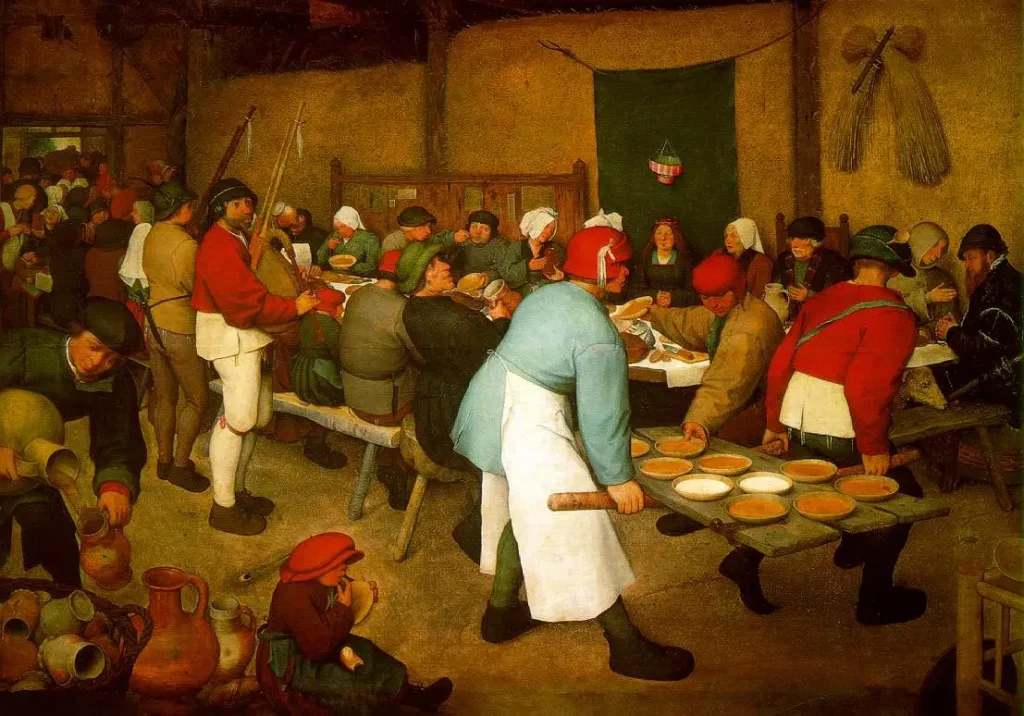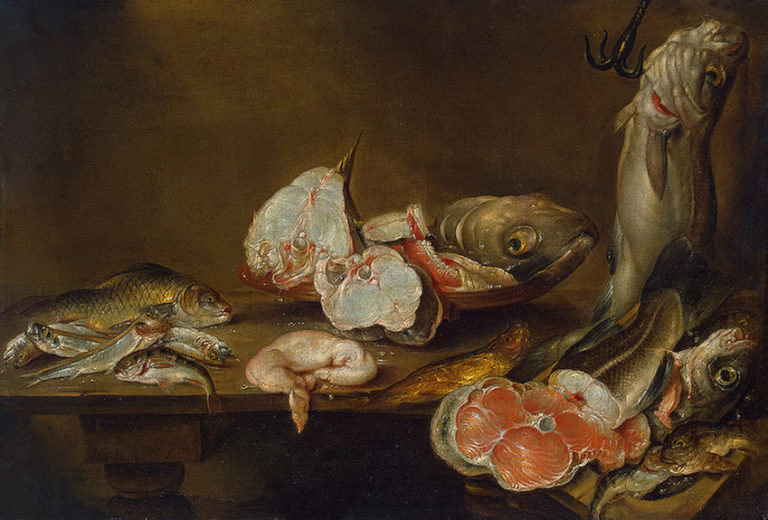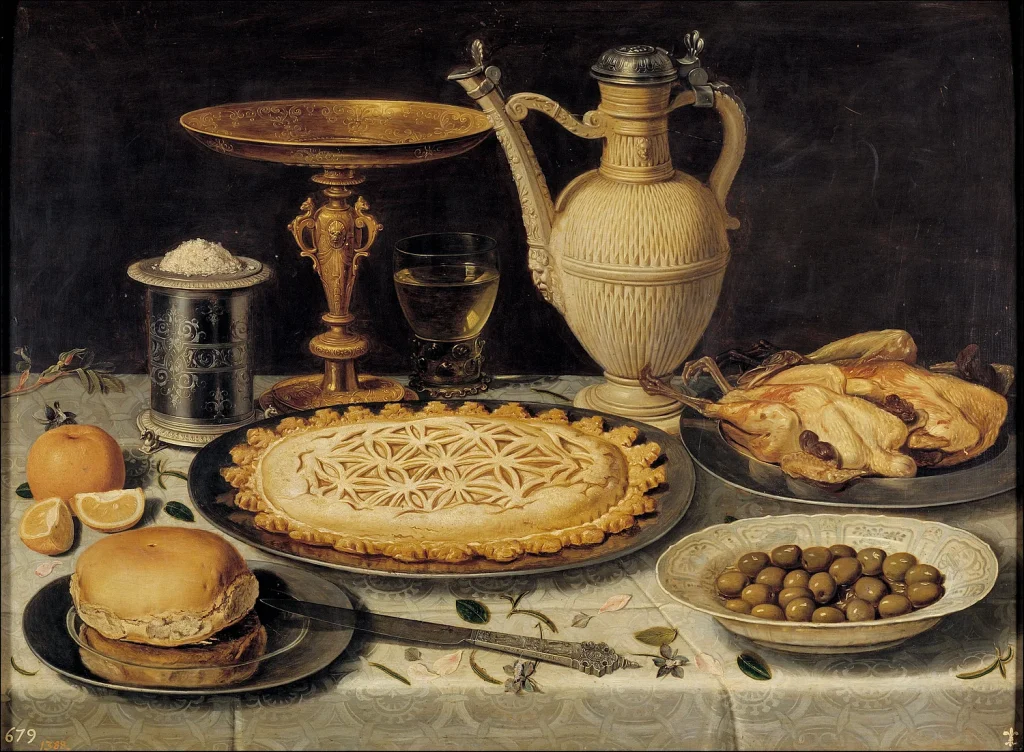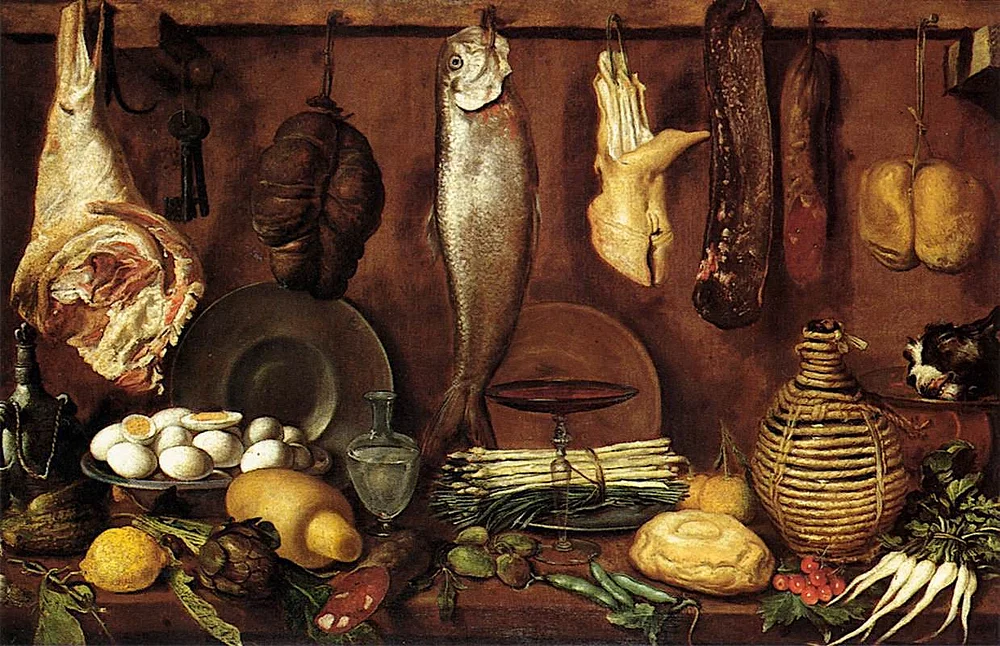What did you have for dinner last night? How about for breakfast? When was the last time you ate food that was not from your country of origin?
For those of us living in the modern world, extreme variety is a constant. We can eat apples from Brazil, baklava from Greece, and shrimp from India all on the same day without even thinking about how it got here or where it came from. For the people of Elizabethan England (1558–1603), imported foods were much less widely available and extremely expensive. The wealthy of English society could afford a variety of delicious foods to grace their table, but for the vast majority of the nation, you had to make do with what was available locally.
Pottage

We tend to associate English food with being bland, heavy, or generally lacking in flavor. And during the Renaissance period, the most commonly eaten meal was pottage, a thick soup made from whatever was readily available along with some grains added in to help it stretch. Typically a myriad of vegetables was added like turnips, carrots, onions, mushrooms, leeks and cabbage along with whatever herbs they could find. The pottage would be stewed together and served in a bread trencher at the start of the day.
A heavy meal like this was necessary for peasants who worked from dawn to dusk, burning as much as 4,000 calories a day. While it sounds simple, a nice hearty pottage can be a delicious meal during the cold weather months.
Seed Cake
This simple, semi-sweet cake was popular as the ingredients were readily available to folks, provided that they had some access to flavorful herbs like anise, cinnamon, and coriander. The cake was small, and round, and used sweet butter, sugar, and milk to give it a mild and pleasant sweetness. It was often baked the day before and then allowed to mature overnight. A splash of milk or in some cases brandy is added to help keep the confection moist. In fact, this cake was so popular it still holds today as a perfect addition to tea time.
Poached Salmon

With sumptuary laws creating limits on what peasants were allowed to utilize from the general area, and religious laws dictating what foods could be eaten on what days, it feels like the average peasant would have a terrible diet! But something always available was fish. And for those who had access to it, salmon was a delectable addition to the table. A poach would be made by adding beer, water, and herbs to a pot and bringing it to a boil. The salmon would be added to a clay dish, covered most of the way with the beer, and then cooked in an oven (or hearth fire) until tender. A light, but delicious dish that added valuable protein to a renaissance peasant’s diet.
Makerouns
This meal could best be described as renaissance mac-an-cheese! They would boil a pot of water and chop up some bread dough into small pieces for quick cooking, dropping them in the pot until tender and then straining the noodles into a dish. A sauce would be made using butter, cheese, and a touch of salt and the food would be served by layering the noodles and cheese sauce one on top of the other. There was plenty of cheese to choose from depending on one’s location, but a good cheddar is just as reliable today as it was in the 16th century!
Hand Pies

These hearty baked pies were perfect for a hardworking peasant to carry with them for a bit of lunch in the field. The pie dough was made using lard, creating a thick, dense crust that acted more like a lunch box than part of the meal itself. The fillings were varied depending upon what a fellow could get their hands on, but popular choices included things like rabbit, lamb, and poultry along with onions, apples, carrots, figs, garlic, peas, and whatever herbs they had available. These sturdy pies could hold up to travel and are still considered delicious meals in the modern era.
